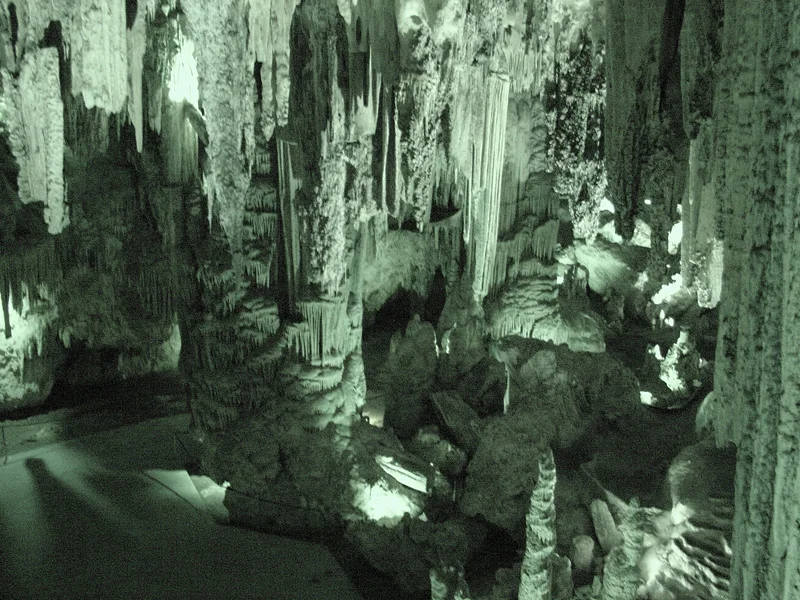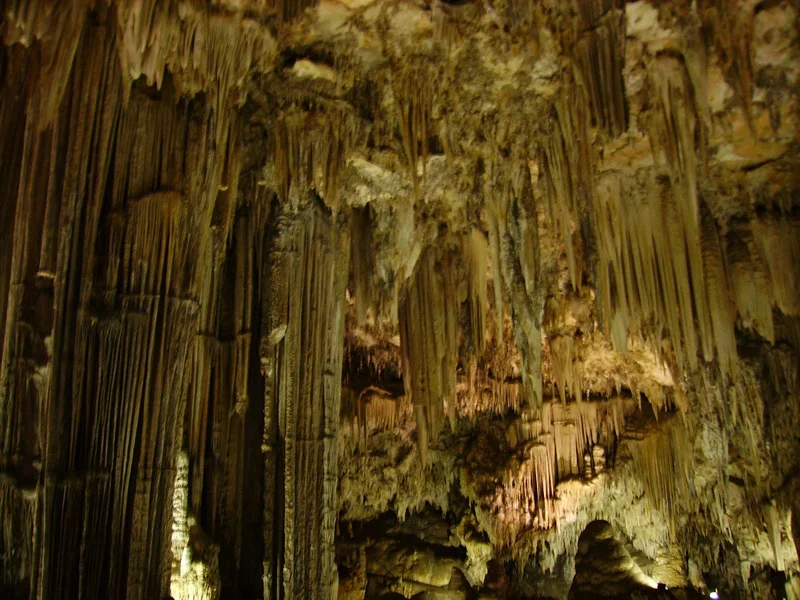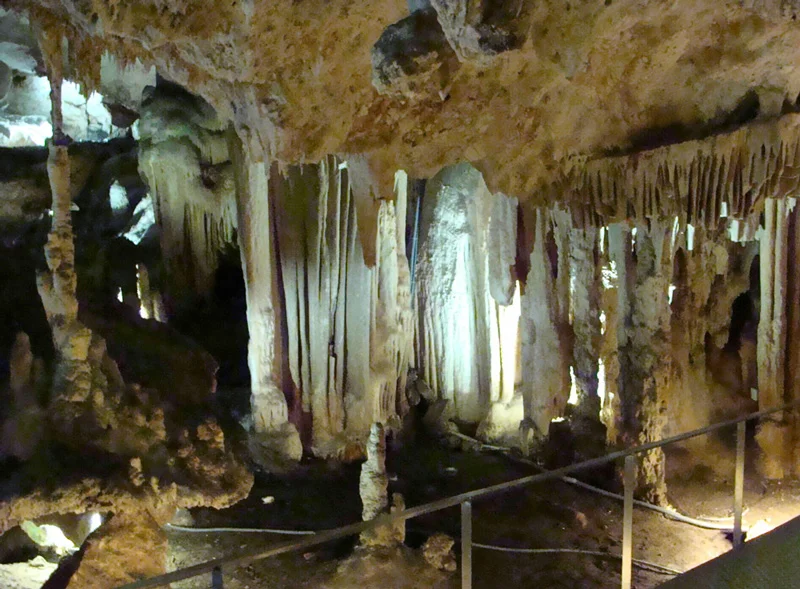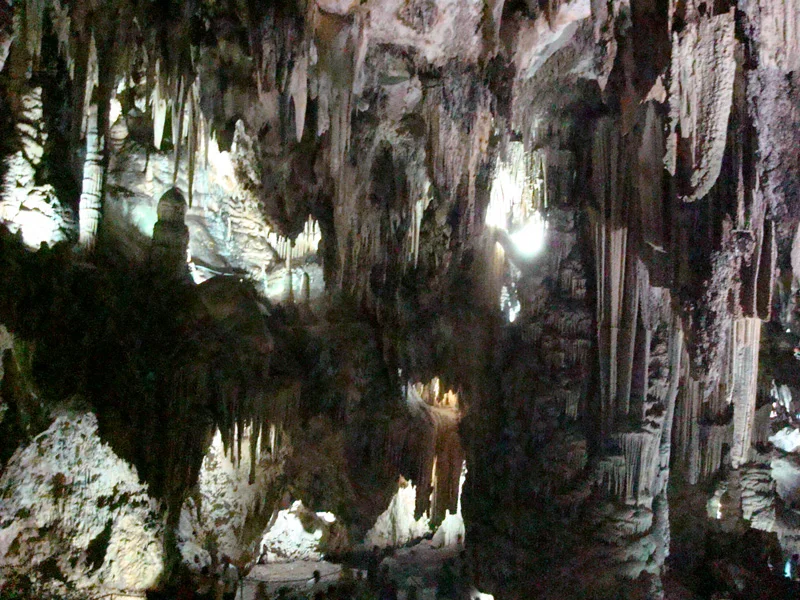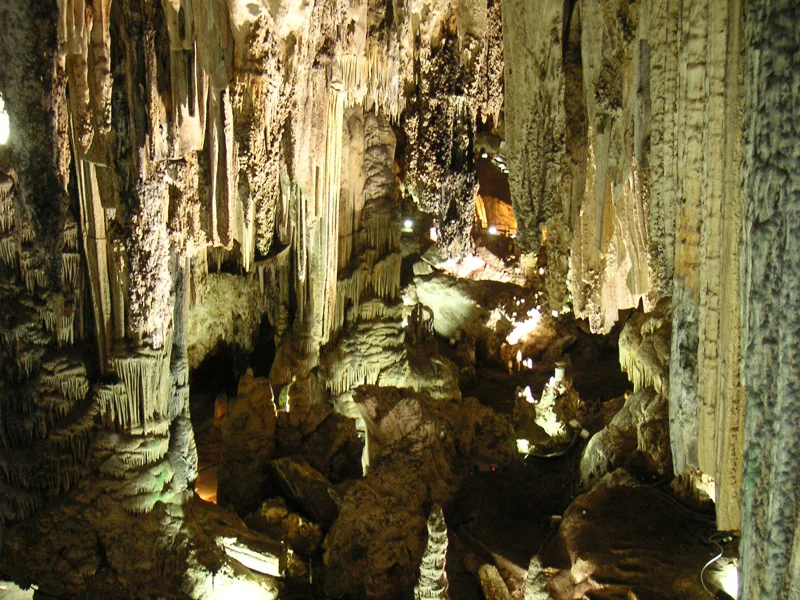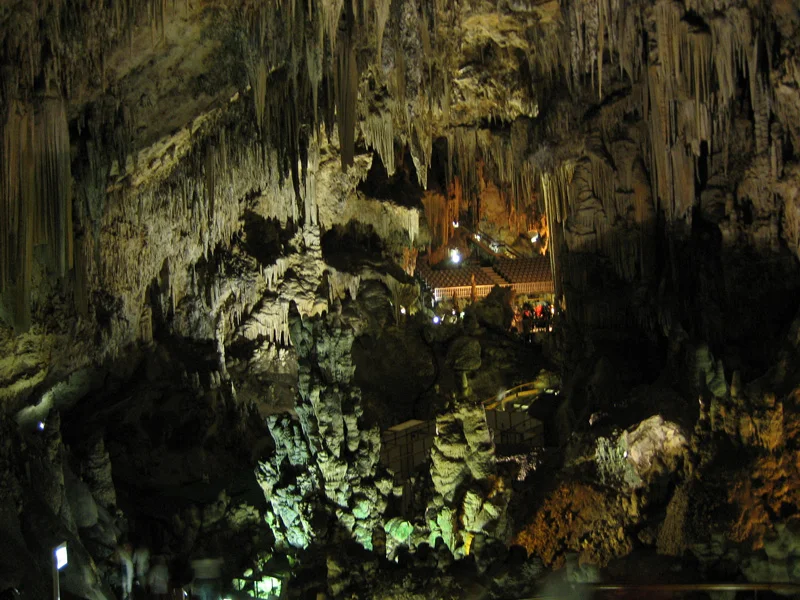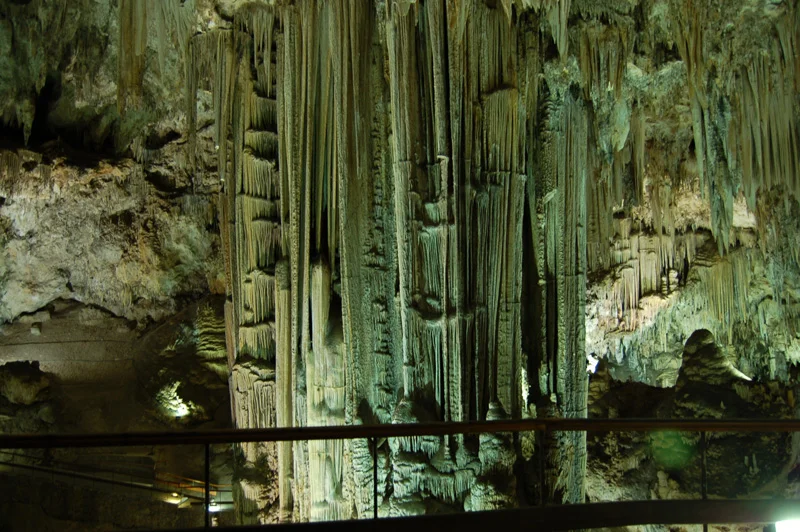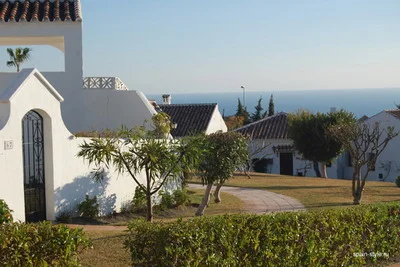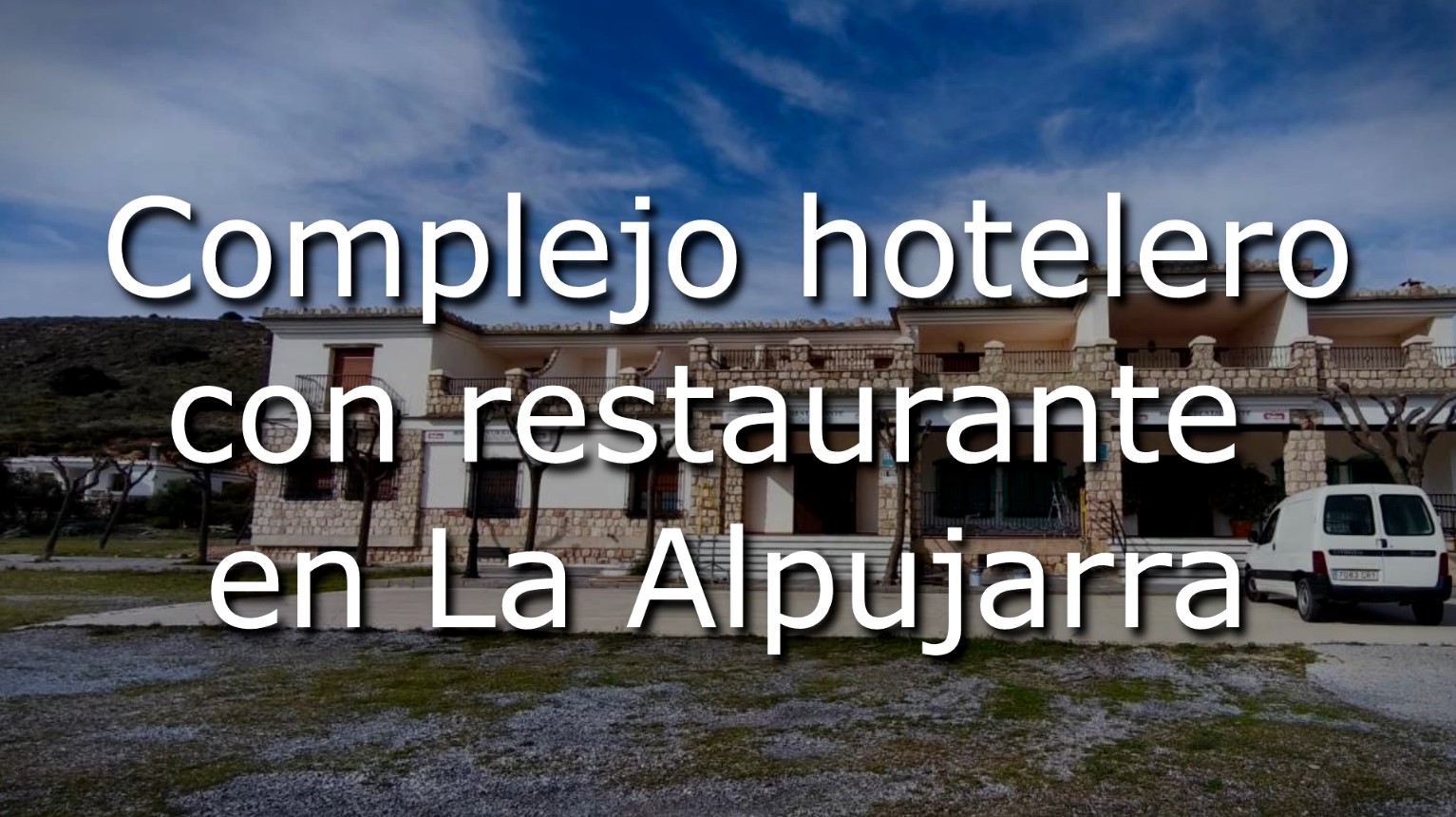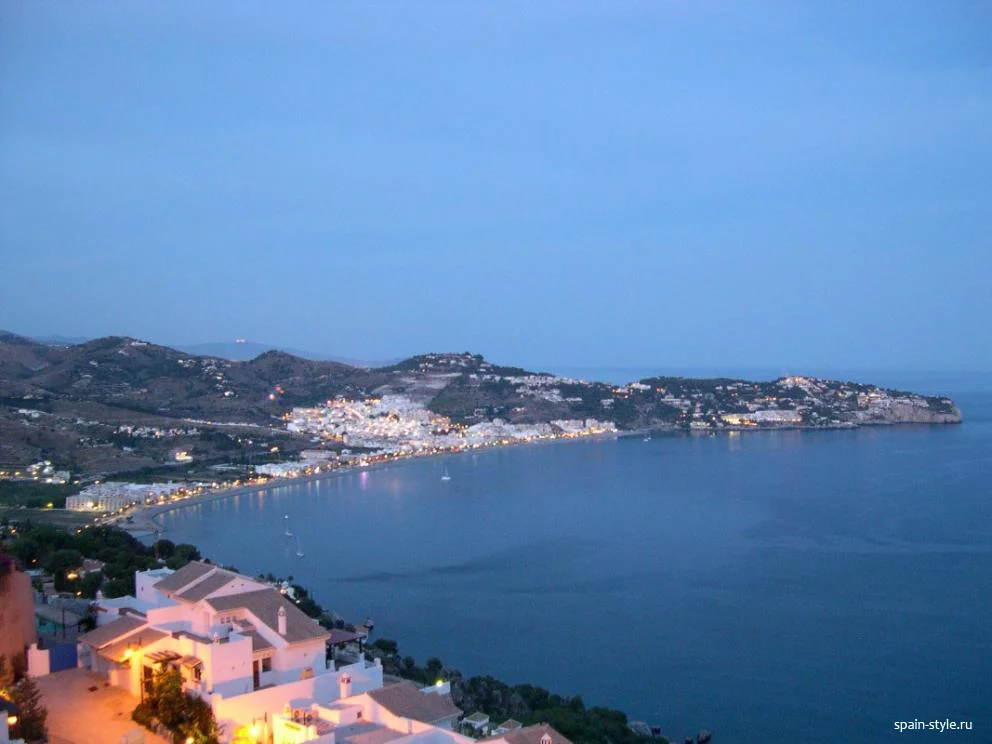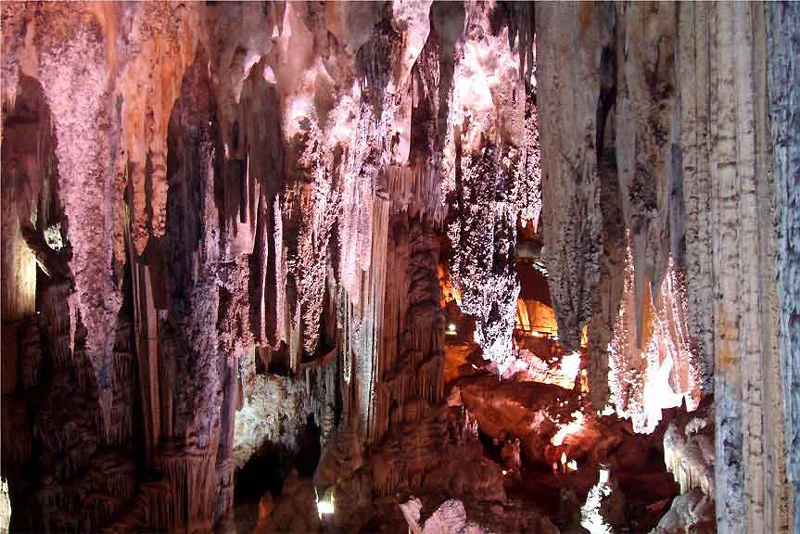
On the eastern coast of Málaga, nestled between the Mediterranean Sea and the Sierra Almijara mountains, lies one of Andalusia’s most mesmerizing treasures: the Caves of Nerja. Declared a National Historic-Artistic Monument in 1961, this “Cathedral of Prehistory” astonishes not only with its geological grandeur but also as a millennia-old canvas where our ancestors left their mark. Ready to explore a subterranean world that defies time?
The Discovery: A Youthful Adventure
The story of the Caves of Nerja reads like a tale of adventure. On January 12, 1959, five young boys from Maro—Francisco Navas Montesinos, Miguel and Manuel Muñoz Zorrilla, José Luis Barbero de Miguel, and José Torres Cárdenas—ventured into a well known as the Minas del Cementerio de Maro to hunt bats. Armed with makeshift tools, they broke through stalactites and crawled through narrow passages until they stumbled upon something extraordinary: skeletons lying alongside ceramic bowls and vast galleries where their flashlight beams vanished into darkness. Their teenage curiosity unveiled a treasure that now draws thousands of visitors yearly.
Rock Art: The Legacy of Andalusia’s First Inhabitants
The caves house 22 paintings of immense historical value, attributed to the Aurignacian period (around 42,000 years ago). In chambers like the Hall of the Organs and Hercules’ Columns, two distinct artistic ensembles stand out:
- A Paleolithic sanctuary with depictions of horses, deer, goats, and aquatic creatures, reflecting humanity’s primal connection to nature.
- Schematic paintings in red, featuring anthropomorphic figures and female engravings, possibly linked to ancient rituals.
These works, protected through decades of study, transform the caves into a living museum of human creativity.
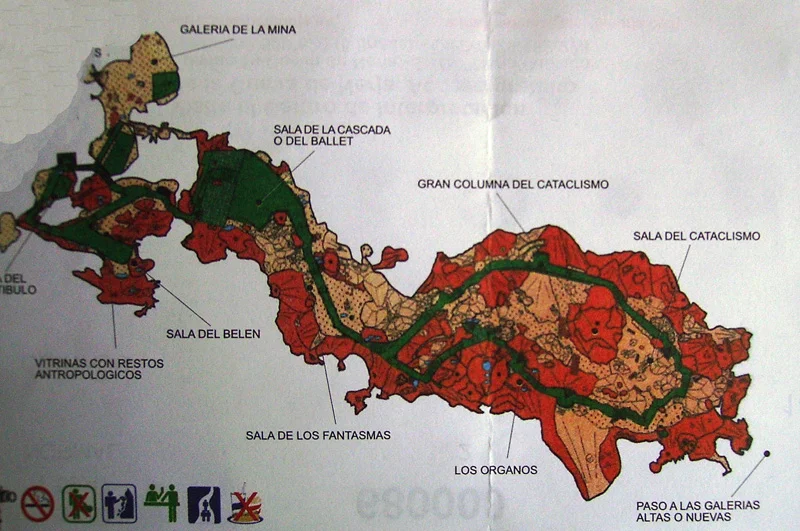
A Labyrinth of Geological Wonders
Of the 4,823 meters explored, only a fraction is open to the public—yet it’s enough to inspire awe. The 7,000 m² visitor route includes chambers such as:
- The Nativity: Formations resembling a natural manger.
- The Waterfalls: Stalagmites mimicking petrified cascades.
- The Cataclysm: A dramatic display of columns and rock layers that whisper tales of ancient upheavals.
While areas like the Hall of Immensity remain hidden, their mystique fuels the allure of the unknown.
Science & Preservation: A Model for the Future
The Caves of Nerja Foundation doesn’t just manage tours—it spearheads cutting-edge conservation. Battling green algae (a result of artificial lighting and humidity) exemplifies the balance between tourism and preservation. Recent studies have also identified unique bat species and traces of human activity dating back 25,000 years, cementing the caves as a living scientific laboratory.
Practical Guide: Beyond the Caves
Just 20 minutes from Málaga and its airport, the site offers:
- A restaurant with views of subtropical gardens.
- A playground and event spaces.
- Encounters with original discoverers, who still work on-site.
Opening hours: Year-round, except January 1 and May 15.
Final Reflection: Where Past Meets Present
The Caves of Nerja are more than a monument—they’re a bridge across time. From prehistoric artists to the adventurous teens of 1959, every corner tells a story. To visit is not just to walk among stalactites; it’s to step into humanity’s shared legacy, where art, science, and nature intertwine. Dare to discover the Cave of Marvels?
Traveler’s tip: Wear sturdy shoes and let the darkness guide you… to wonder.
